服务器部署Kafka 使用Offset Explorer(Kafka Tool)监控安装配置保姆级教程(多图)
Offset Explorer (Kafka Tool) 是安装在Windows上的一个可实现远程监控Kafka集群中Broker、Topics、Consumers 信息的软件。有什么用?实现Kafka的可视化操作,告别命令行软件对于Topics 信息的监控很全面,可以监控Topic中 Partition的属性信息以及Topic中已有Data的属性,如partition, offset, key,
·
Offset Explorer (Kafka Tool) 是安装在Windows上的一个可实现远程监控Kafka集群中Broker、Topics、Consumers 信息的软件。
有什么用?实现Kafka的可视化操作,告别命令行
软件对于Topics 信息的监控很全面,可以监控Topic中 Partition的属性信息以及Topic中已有Data的属性,如partition, offset, key, value, timestamp。并可实现对Topic的增删查改功能。
下载安装Offset Explorer
点击跳转Offset Explorer官网。跟随下图先点击蓝色箭头处,再根据自己 Windows 版本下载对应的 Offset Eplorer 安装即可。
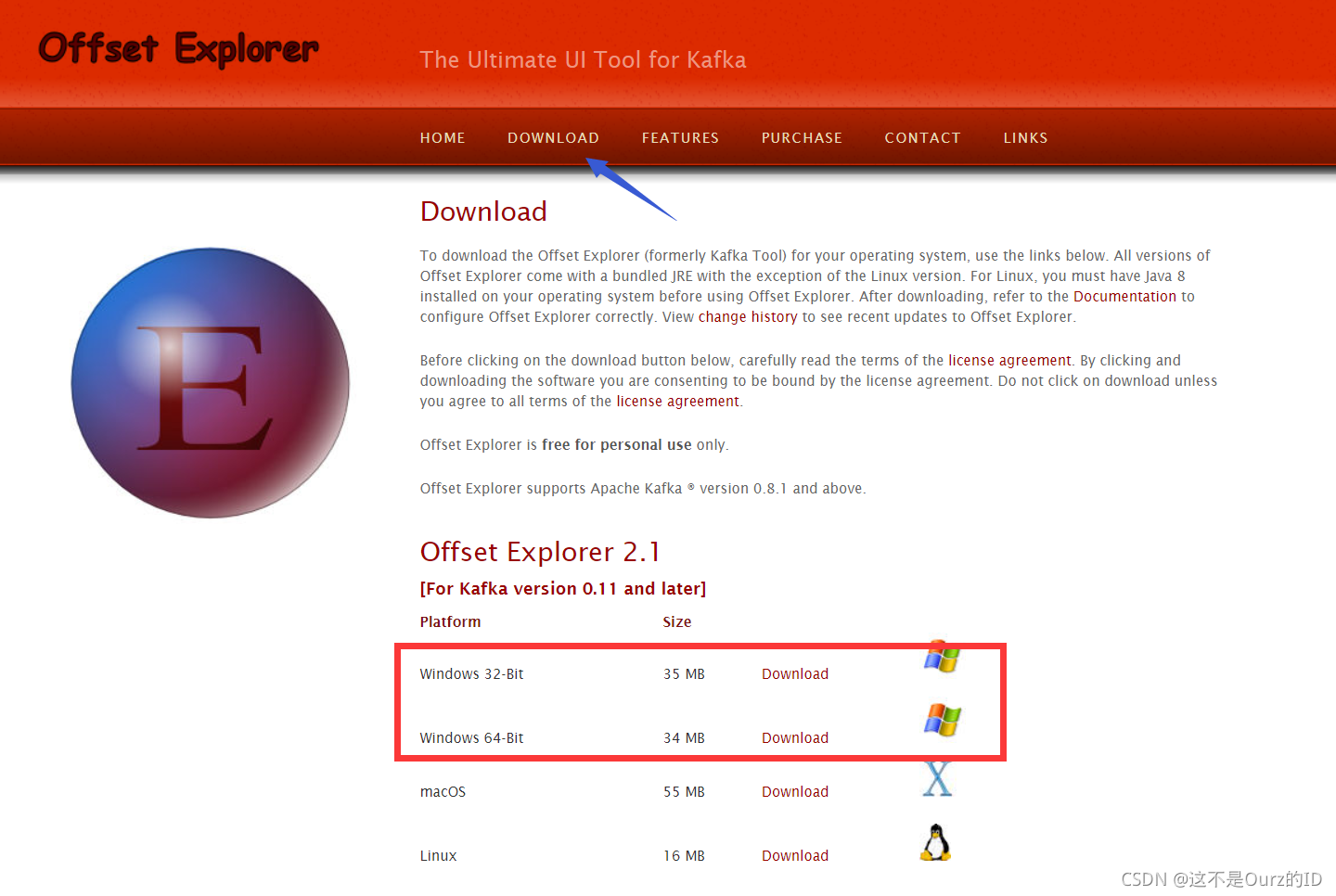
安装完毕,打开界面为:

先不着急添加 Connection。需先进行 Kafka 配置,否则会连接出错。
Kafka配置
- 进入Kafka安装目录

- 打开
server.properties配置文件
vim config/server.properties
- 添加
advertised.listeners=PLAINTEXT://:9092。说明一下,其他博文会说将此设置为advertised.listeners=PLAINTEXT://当前服务器ip:9092,也是正确的。之所以省略掉当前服务器ip是因为Kafka会自动将当前服务器的名称输入。配置好如下图所示:
- 配置
delete.topic.enable=true,没有这一条直接加在末尾即可。作用:Kafka可以完全删除掉一条Topic。若不配置,输入命令删除或使用Offset Explorer删除后Kafka中Topics不会直接被删除,而是打上Marked for Deletion的标签。 - 修改
log.retention.check.interval.ms=2000。作用:缩短每次检查Log时间,确保输入删除命令后Kafka可短时间内删除掉Topic。
博主配置好的例子:
# Licensed to the Apache Software Foundation (ASF) under one or more
# contributor license agreements. See the NOTICE file distributed with
# this work for additional information regarding copyright ownership.
# The ASF licenses this file to You under the Apache License, Version 2.0
# (the "License"); you may not use this file except in compliance with
# the License. You may obtain a copy of the License at
#
# http://www.apache.org/licenses/LICENSE-2.0
#
# Unless required by applicable law or agreed to in writing, software
# distributed under the License is distributed on an "AS IS" BASIS,
# WITHOUT WARRANTIES OR CONDITIONS OF ANY KIND, either express or implied.
# See the License for the specific language governing permissions and
# limitations under the License.
# see kafka.server.KafkaConfig for additional details and defaults
############################# Server Basics #############################
# The id of the broker. This must be set to a unique integer for each broker.
broker.id=2
############################# Socket Server Settings #############################
# The address the socket server listens on. It will get the value returned from
# java.net.InetAddress.getCanonicalHostName() if not configured.
# FORMAT:
# listeners = listener_name://host_name:port
# EXAMPLE:
# listeners = PLAINTEXT://your.host.name:9092
#listeners=PLAINTEXT://:9092
# Hostname and port the broker will advertise to producers and consumers. If not set,
# it uses the value for "listeners" if configured. Otherwise, it will use the value
# returned from java.net.InetAddress.getCanonicalHostName().
advertised.listeners=PLAINTEXT://:9092
# Maps listener names to security protocols, the default is for them to be the same. See the config documentation for more details
#listener.security.protocol.map=PLAINTEXT:PLAINTEXT,SSL:SSL,SASL_PLAINTEXT:SASL_PLAINTEXT,SASL_SSL:SASL_SSL
# The number of threads that the server uses for receiving requests from the network and sending responses to the network
num.network.threads=4
# The number of threads that the server uses for processing requests, which may include disk I/O
num.io.threads=8
# The send buffer (SO_SNDBUF) used by the socket server
socket.send.buffer.bytes=102400
# The receive buffer (SO_RCVBUF) used by the socket server
socket.receive.buffer.bytes=102400
# The maximum size of a request that the socket server will accept (protection against OOM)
socket.request.max.bytes=104857600
############################# Log Basics #############################
# A comma separated list of directories under which to store log files
log.dirs=/tmp/kafka-logs
# The default number of log partitions per topic. More partitions allow greater
# parallelism for consumption, but this will also result in more files across
# the brokers.
num.partitions=1
# The number of threads per data directory to be used for log recovery at startup and flushing at shutdown.
# This value is recommended to be increased for installations with data dirs located in RAID array.
num.recovery.threads.per.data.dir=1
############################# Internal Topic Settings #############################
# The replication factor for the group metadata internal topics "__consumer_offsets" and "__transaction_state"
# For anything other than development testing, a value greater than 1 is recommended to ensure availability such as 3.
offsets.topic.replication.factor=1
transaction.state.log.replication.factor=1
transaction.state.log.min.isr=1
############################# Log Flush Policy #############################
# Messages are immediately written to the filesystem but by default we only fsync() to sync
# the OS cache lazily. The following configurations control the flush of data to disk.
# There are a few important trade-offs here:
# 1. Durability: Unflushed data may be lost if you are not using replication.
# 2. Latency: Very large flush intervals may lead to latency spikes when the flush does occur as there will be a lot of data to flush.
# 3. Throughput: The flush is generally the most expensive operation, and a small flush interval may lead to excessive seeks.
# The settings below allow one to configure the flush policy to flush data after a period of time or
# every N messages (or both). This can be done globally and overridden on a per-topic basis.
# The number of messages to accept before forcing a flush of data to disk
#log.flush.interval.messages=10000
# The maximum amount of time a message can sit in a log before we force a flush
#log.flush.interval.ms=1000
############################# Log Retention Policy #############################
# The following configurations control the disposal of log segments. The policy can
# be set to delete segments after a period of time, or after a given size has accumulated.
# A segment will be deleted whenever *either* of these criteria are met. Deletion always happens
# from the end of the log.
# The minimum age of a log file to be eligible for deletion due to age
log.retention.hours=168
# A size-based retention policy for logs. Segments are pruned from the log unless the remaining
# segments drop below log.retention.bytes. Functions independently of log.retention.hours.
#log.retention.bytes=1073741824
# The maximum size of a log segment file. When this size is reached a new log segment will be created.
log.segment.bytes=1073741824
# The interval at which log segments are checked to see if they can be deleted according
# to the retention policies
log.retention.check.interval.ms=2000
############################# Zookeeper #############################
# Zookeeper connection string (see zookeeper docs for details).
# This is a comma separated host:port pairs, each corresponding to a zk
# server. e.g. "127.0.0.1:3000,127.0.0.1:3001,127.0.0.1:3002".
# You can also append an optional chroot string to the urls to specify the
# root directory for all kafka znodes.
zookeeper.connect=slave1:2181,slave2:2181,slave3:2181
# Timeout in ms for connecting to zookeeper
zookeeper.connection.timeout.ms=18000
############################# Group Coordinator Settings #############################
# The following configuration specifies the time, in milliseconds, that the GroupCoordinator will delay the initial consumer rebalance.
# The rebalance will be further delayed by the value of group.initial.rebalance.delay.ms as new members join the group, up to a maximum of max.poll.interval.ms.
# The default value for this is 3 seconds.
# We override this to 0 here as it makes for a better out-of-the-box experience for development and testing.
# However, in production environments the default value of 3 seconds is more suitable as this will help to avoid unnecessary, and potentially expensive, rebalances during application startup.
group.initial.rebalance.delay.ms=0
- 重启Kafka
bin/kafka-server-start.sh -daemon config/server.properties
Offset Explorer使用
-
右键点击红色箭头
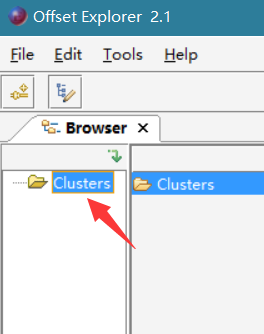
-
点击
Add New Connection
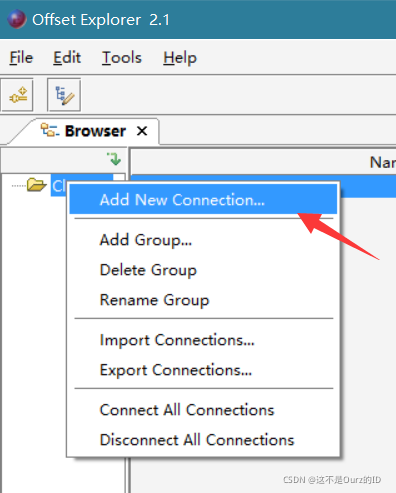
-
如下图说明进行配置,注:
服务器外网IP只需要填写集群中一个节点的IP即可

-
点击
Connect即可连接

-
成功如下图,即可对Kafka集群进行可视化操作

安全组中要在入方向配置两条,授权对象自选。
- 端口:
2181,说明:Zookeeper - 端口:
9092,说明:Kafka
博主在的大学内IP总是变,导致起初配置阿里云安全组时只能将特定端口向全部IP开放,造成了一定的不安全性。
该部分主要解决:如何配置授权对象属性使得只要控制端位于校园网内即可访问端口
- 多连几天,观察IP变化。可用百度直接搜索
ip获取该机的外网Ip。博主观察发现,博主所在校园网属于CIDR网段格式中的B级段。参考:阿里云安全组规则授权对象设置为固定IP段访问,CIDR的IP地址的表示与划分方法 - 在阿里云安全组中授权对象属性中配置
当前ip/16,将IP划分到B级类即可。如下图:已配置好阿里云Kafka的安全组

更多推荐
 已为社区贡献2条内容
已为社区贡献2条内容


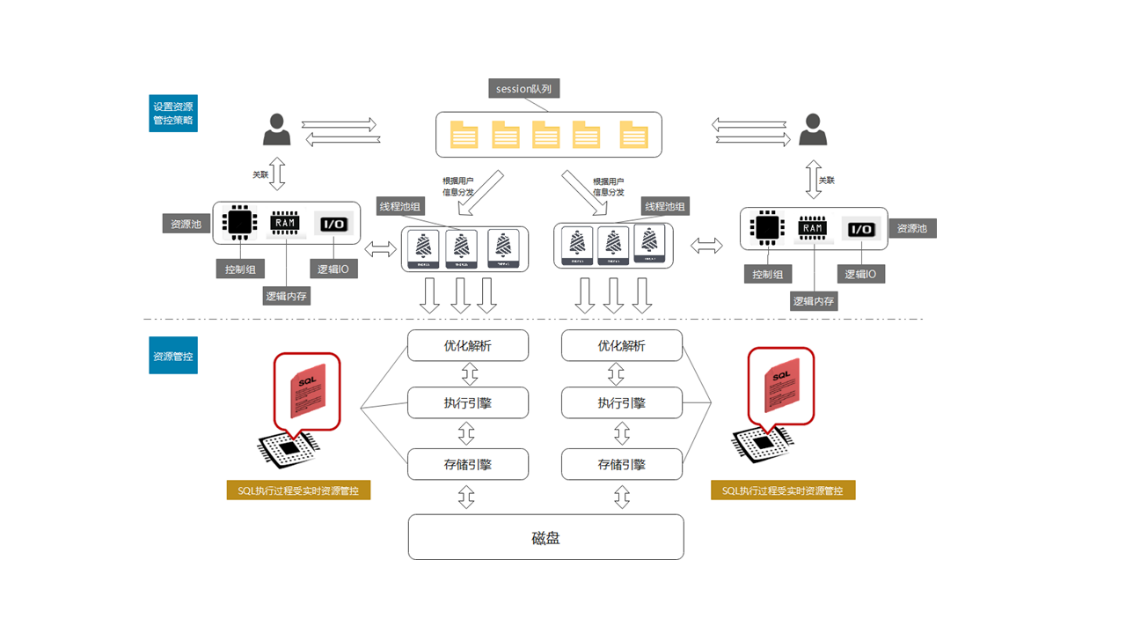
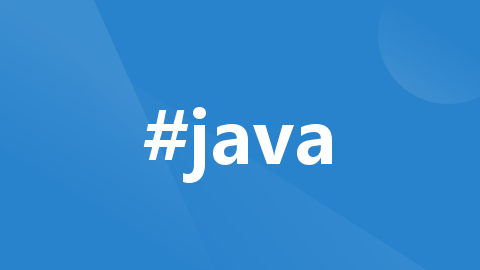





所有评论(0)